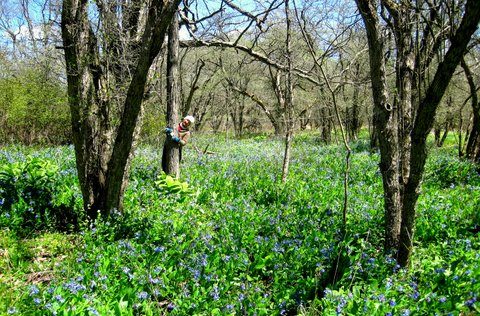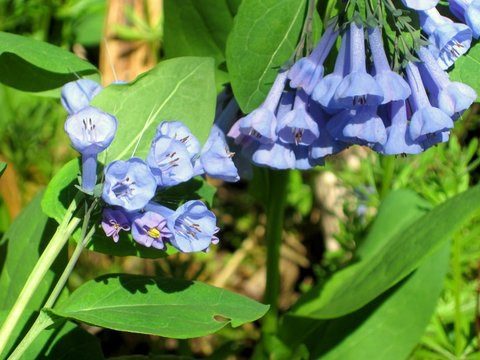On May 21, from 10 a.m. to 2 p.m., an event, dubbed the Bluebell Festival, will take place at the Bement-Billings Farmstead, one mile north of Newark Valley.
The Newark Valley Historical Society built the Sycamore Bridge on the grounds of the Bement-Billings Farmstead in 2008. It gave the Society access to 18 acres of flood plain on the west side of the East Branch of the Owego Creek and a perfect place for nature trails. In the process of building what would become trails, a well-established colony of Virginia Bluebells were discovered.
The Virginia Bluebell (Mertensia Virginica) is a delicate looking, ephemeral spring flower found mostly in moister areas such as wetlands and flood plains. It has bell-shaped sky blue flowers but some plants can have white or pink blossoms. As with many flowers it has acquired a variety of names: Virginia cowslip, lungwort oysterleaf and Roanoke bells.
One interesting characteristic is that it is petiolate at the bottom of the stem (the leaf has a stalk) and sessille at the top (leaf is attached directly to the stem. It grows up to 2-feet tall and grows throughout Eastern North America from Quebec and Georgia to the Mississippi.

Taking a hike on the Sycamore Trails, and surrounded by Virginia Bluebells, this visitor is taking it all in. Visit this year’s Bluebell Festival at the Bement-Billings Farmstead, planned for May 21 from 10 a.m. to 2 p.m. Provided photo.
Its typical pollinators are butterflies. Do not let its delicate appearance fool you. It is classed as being in hardiness zone three meaning that it can withstand temperatures down to -40 degrees. Its Latin name comes from the German botanist Franz Carl Mertens.
These flowers had widespread use in Native American medicine being used as a pulmonary aide for tuberculosis and whooping cough (Cherokee). A root infusion could be used to treat poison and veneral issues (Haudenosaunee).
Flood plains and wetlands are rich sources for biodiversity, and the Sycamore Trail area is no exception. There are over 70 different plants and flowers that can be seen at different times of the year along with 21 different species of trees. Some of the plants include milkweed, jack-in-the-pulpit, skunk cabbage, hemp dogbane, spotted Joe-Pye weed, jewel weed, Dame’s rocket, pokeweed, wild potato vine, wild cucumber, Canada Lilly, false hellebore, buttercups and common blue violet.
Hundreds of people have enjoyed them each spring and two members of the Historical Society have decided that a Festival should be planned around the time when peak blooming occurs. We are calling it a Bluebell Festival and will be demonstrating heritage skills and promoting membership (as usual).
The Society’s guilds will be present. They include the Old Hickory Long Guns, Shuttles and Spindles, and the Blacksmithing and the Cooking / Guides Guild. Children’s activities include bookmark making and paper crafts.
Village Librarian Erin Chapman will conduct a special story walk along the trail based on the book, The Hidden Rainbow by Katie Matteson. There will be an antique sewing machine demo; guided tours of both the nature trail and herb garden and the Farmstead’s gift shop will be open.
For more information, you can contact them at (607) 642-9516, visit them on Facebook, or visit www.nvhistory.org.



Be the first to comment on "Bluebell Festival at the Bement-Billings Farmstead"